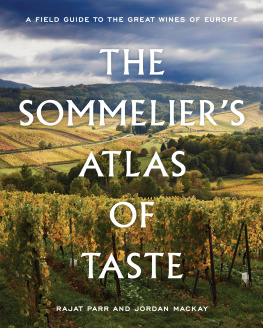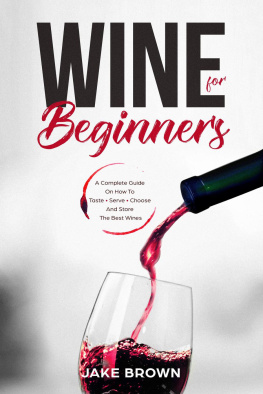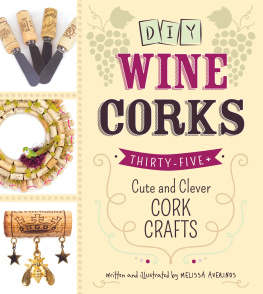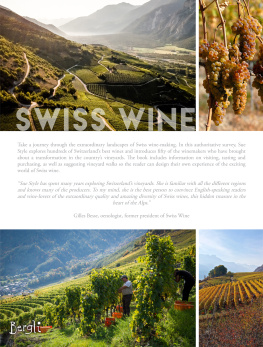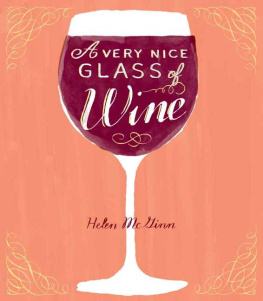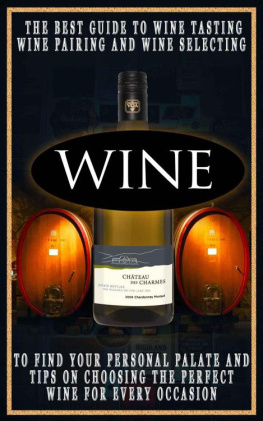Contents
ACKNOWLEDGMENTS
Together, Raj and I would like to thank all the producers we visited on our travels for being so generous with their time, their thought, and their wine. We went on several month-long trips, and we tried to fill every hour with work. Inevitably, this led us to try to see people on weekends and the few holidays that crept up. Amazingly, many producers agreed to see us on these times, cutting into their own familytime. Without the magnanimity of these remarkable vignerons, we wouldnt have been able to create this book.
Specifically, wed love to note a few who were able to go even above and beyond by helping with accommodation, or setting up appointments, meals, translation, and more. These include Jean-Laurent Vacheron, Arnaud and Geraldine Lambert, David Chapel and Michele Smith, Guillaume dAngerville, Becky Wasserman and Russell Hone, Jeremy and Diana Seysses, Stephane Ogier, Jean and Pierre Gonon, Marc Perrin, Johannes Leitz, Luca Currado, Ricardo Campinoti, Eric Solomon, and the Austrian Wine Board. Even David Feldstein. I also extend a very special note of gratitude to Angelina and Kilian Franzen of Weingut Franzen, who took me to her family doctor when I was so sick I could neither taste nor smell.
Wed also like to thank Ten Speed Press for so enthusiastically publishing this book, especially the sharp editorial team who worked on this bookEmily Timberlake, Anne Goldberg, Carey Jones, and Clara Sankeyas well as designer Annie Marino, and production manager Dan Meyers. And, of course, we were thrilled to workwith Joe Woodhouse, who captured the images of this journey brilliantly.
Raj would like to extend special gratitude to dear friend and winemaking partner in Domaine de la Cte, Sandhi, and Evening Land, Sashi Moorman. Also to Pedro Parra, who, through many hours of conversation, has helped him arrive at many of his positions on soil and terroir. And, finally, Im so grateful to my beautiful wife, Christie, who took care of our house, life, and Fernie for the months and months I was absent, either traveling or chained to my desk. None of this would have been possible without her spirit and support.
Jordan Mackay
ONE
TASTE AND TERROIR
In tasting our way across the wine regions of Europe we found ourselves, as one so often does over wine, drawn into fascinating conversations with the people who make it. From the scientific and agricultural to the philosophical and spiritual, these discussions were far-ranging, to say the least. Most of all, we talked about possibility. What can drinking a wine possibly tell us about it and whence it came? And what are we capable of comprehending in that wine?
The answers we sought felt both near and far away. But the length and intensity of our journeya sort of pilgrimage to the heart of winenever left us doubting that they could be known, even if those discoveries are difficult to relate in words, facts, or figures. That sense of knowing we craved, and which we hope to pass on, came most powerfully as a feeling of connection to people and place. Thus we found ourselves in Alsace, discussing with Olivier Humbrecht the possibility of water having memory. Or we stood for hours around an upturned barrel with Jrme Prvost, wondering out loud if living in close proximity to ones vineyard and visiting it every day can heighten the expression of the wine it makes. And we found ourselves having several memorable mealssuch as the one prepared by Jeremy Seysses using pork from a pig he had raised, a perfect match for his Dujac winesthat proved over and over again that what winemakers tend to eat connects to their wines. With great wine its impossible to tell what aspect begets what feature; the circle is almost always virtuous.
What follows in this chapter is a consideration of those conversations and many more, exploring some of the philosophical territory we found ourselves traversing as we likewise crossed over the Alps and the Pyrenees and Sierra Cantabria. But it all comes down to taste. The attempt to write generally about the taste of wine and the subsequent attempt to connect those tastes to places will inevitably invite criticism. These censures will claim that generalities are of little use, that wine flavors are too subjective to catalog, that the connections between wine and terroir can never be known. Perhaps. But, just as a clear nights skys grandeur prompts us to ponder the nature of existence, a great wines irresistible blend of delight and complexity begs us to inquire into its origins (and, implicitly, investigate how to get more). That inquiry must begin with the only and still best tool we already possess. For what is perceivable about wine if not its taste?
Taste is the key to unlocking wines mysteries. The questions prompted by a taste of compelling wine leads to inquiries of its ontology: the relation of environment to vine; environment and vine to vigneron; vigneron to wine; and wine to drinker. Taken together, those relationships form the equation we use to understand whats more commonly known as terroir, the highly charged word some consider the essence of wine and others see as overused, trite, and pointless. In the investigation, through taste, of terroir, we also examine terms like minerality and typicity . And we glance into the fascinating and daunting research of human perception, which in the end could be a key to a new understanding of wine.
ON TERROIR
Make no mistake, we are believers in terroir, but we also recognize that its at once the most meaningless and meaningful term in wine, and still has the power to raise hackles and incite debate. This is somewhat surprising, considering that the term, which was once owned wholly by the French, has now permeated the general vocabulary of wine and food in many other languages. Indeed, terroir has even infiltrated popular culture to an almost absurd degree. For instance, these days, in wide use is the term merroir to refer to the impact of specific marine environments on oysters. A 2015 Rolling Stone article on basketball was titled The Terroir of the Atlanta Hawks. In 2017, the webzine The Awl ran a piece called Instagram Has No Terroir. Were still waiting for hairoir (the effect of environment on hairstyles) and fairoir (a look into expression of locality in music festivals). If youre reading this, you no doubt have some sense of the word, but in case you dont or so we can simply be clear, well take a moment to ponder what all the fuss is about, as defining terroir is a messy and unmanageable task.
Were often reminded that terroir is a word with no exact translation into English, which faintly suggests that we native English speakers are incapable of ever truly understanding its complex layers of meaning (the French would no doubt agree with this). Perhaps that is so, but we can give it a shot. One thing is clear: Because of its similarity to the familiar Latin root terr , meaning earth or land, many people associate terroir first and foremost with soil. Whats the terroir like? weve heard asked more than once by someone who really just wants to know about a vineyards soil profile. Of course, if youre already a student of wine, you know the implication of terroir goes far beyond soil. There are many good attempts to define terroir in English, but a classic one can be found in the introduction to the book called Terroir (James E. Wilson, 1998), written by renowned British wine writer Hugh Johnson, who elegantly defines the term as much more than what goes on beneath the surface. Properly understood, it means the whole ecology of a vineyard: every aspect of its surroundings from bedrock to late frosts and autumn mists, not excluding the way a vineyard is tended, nor even the soul of the vigneron . With its descriptive flourishes, Johnsons definition captures the all-encompassing sense of terroir. Invoking the vintners soul is a nice touch to remind us that it will always linger beyond our grasp.

